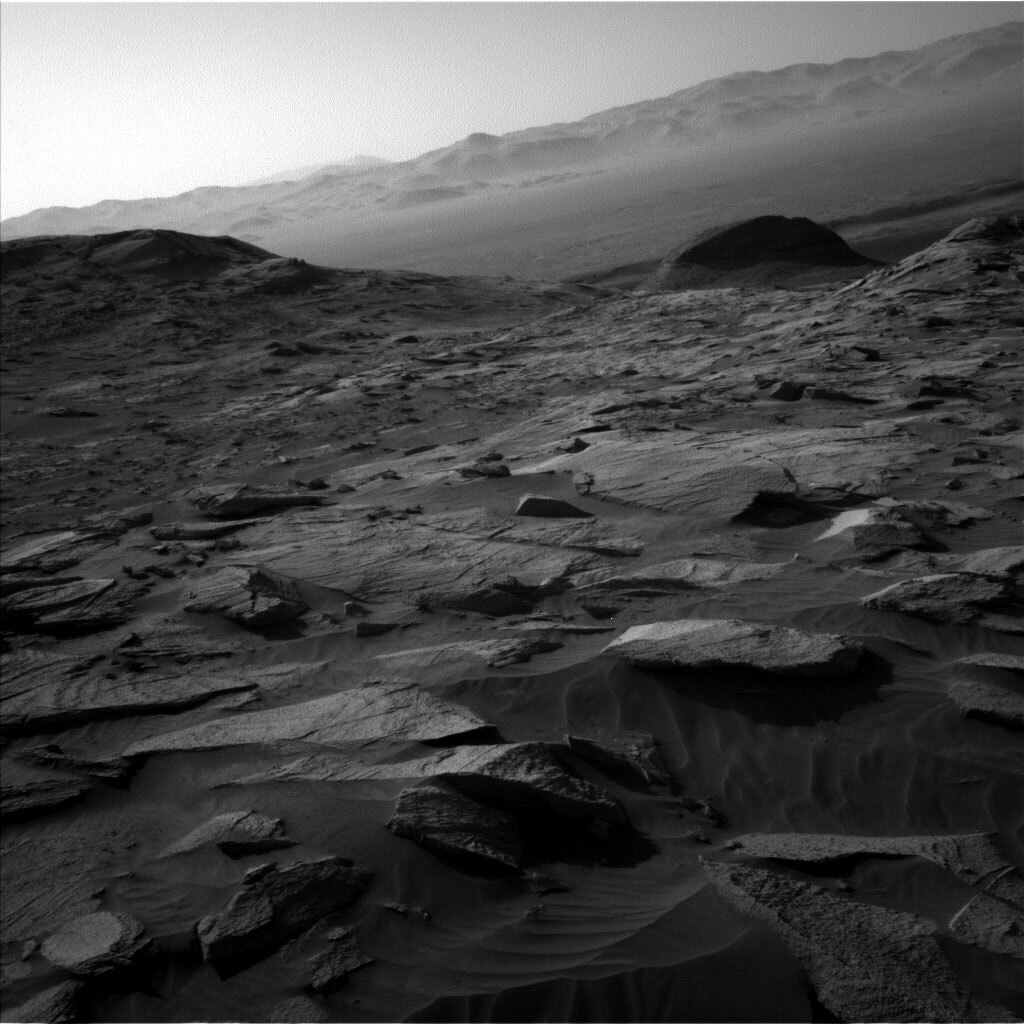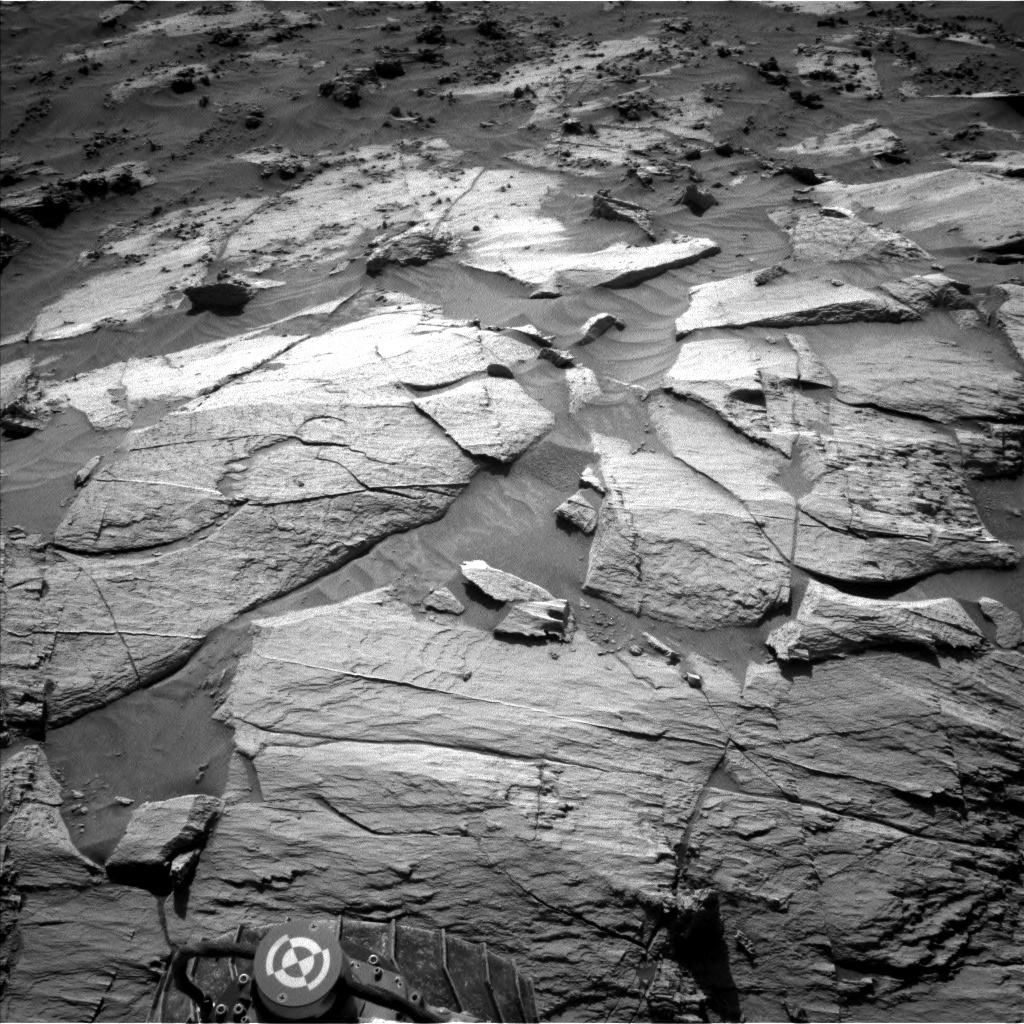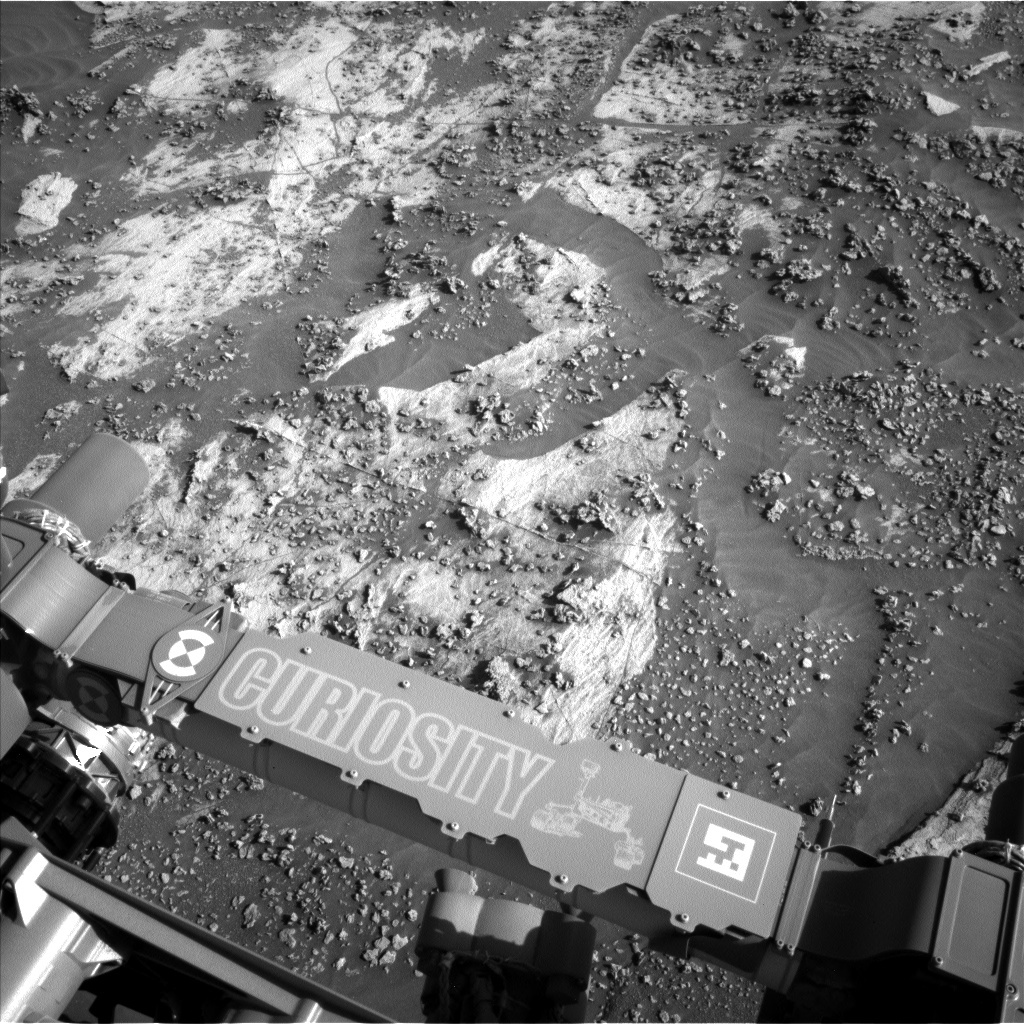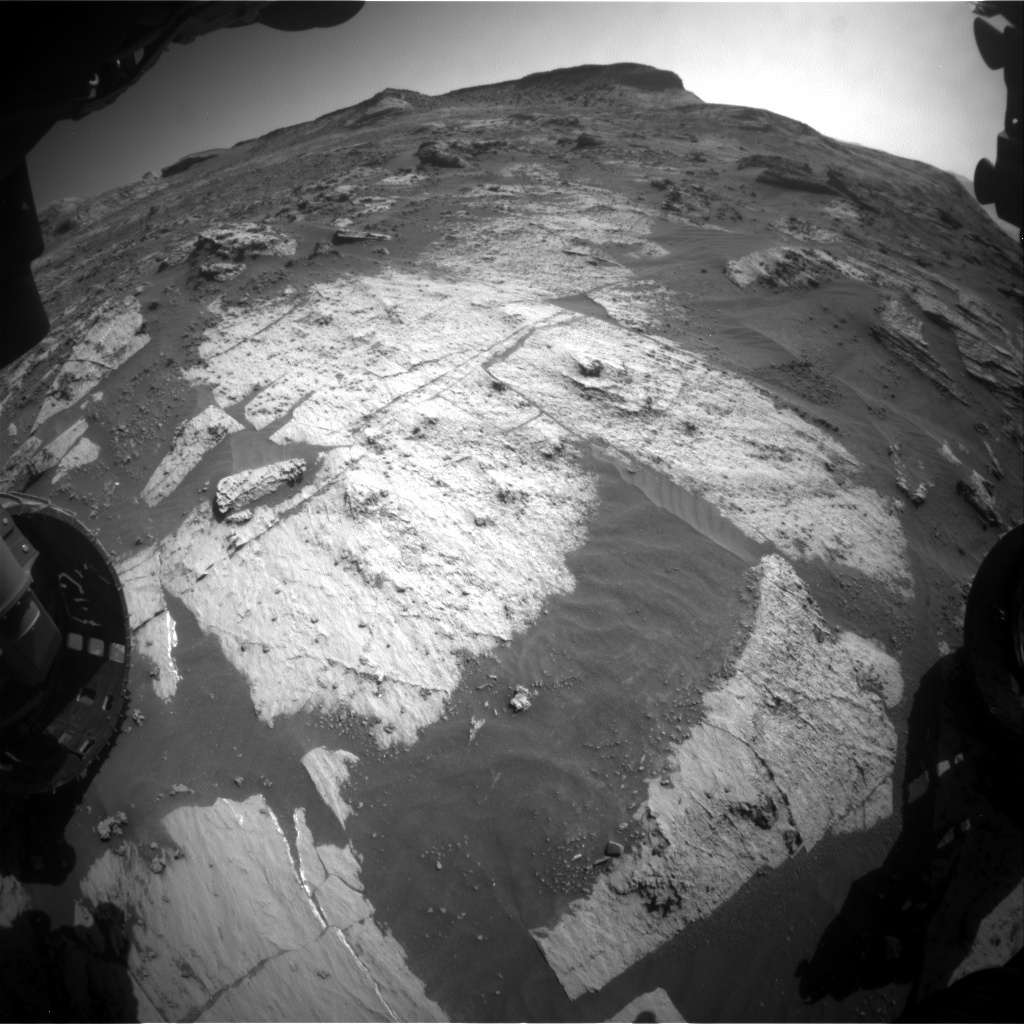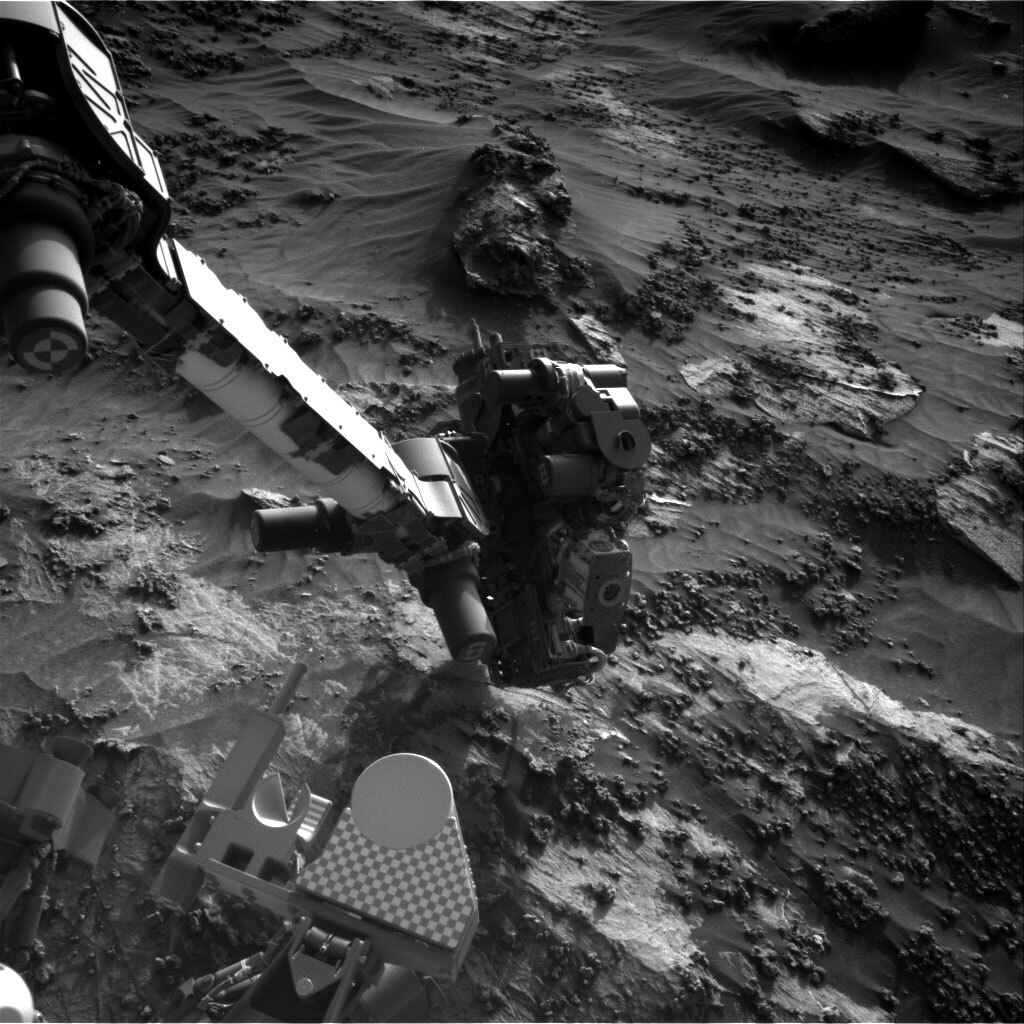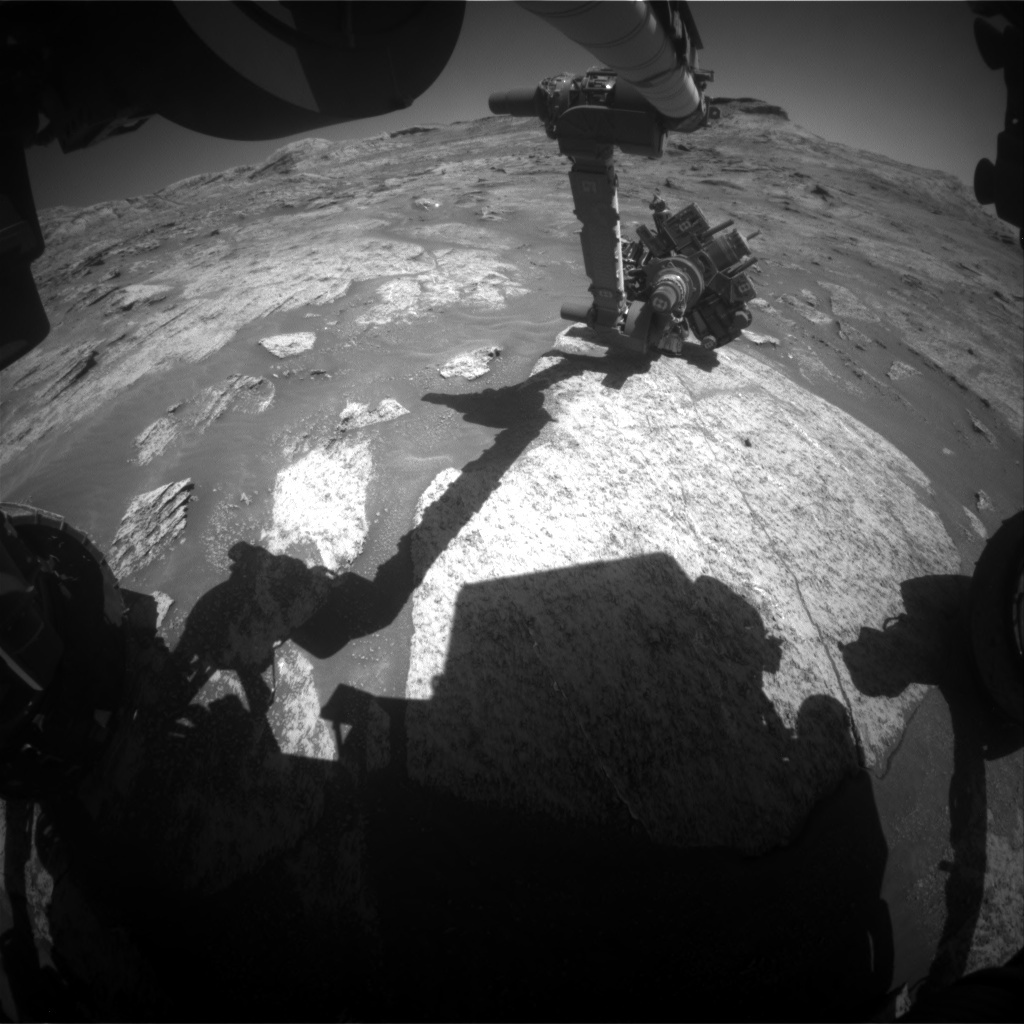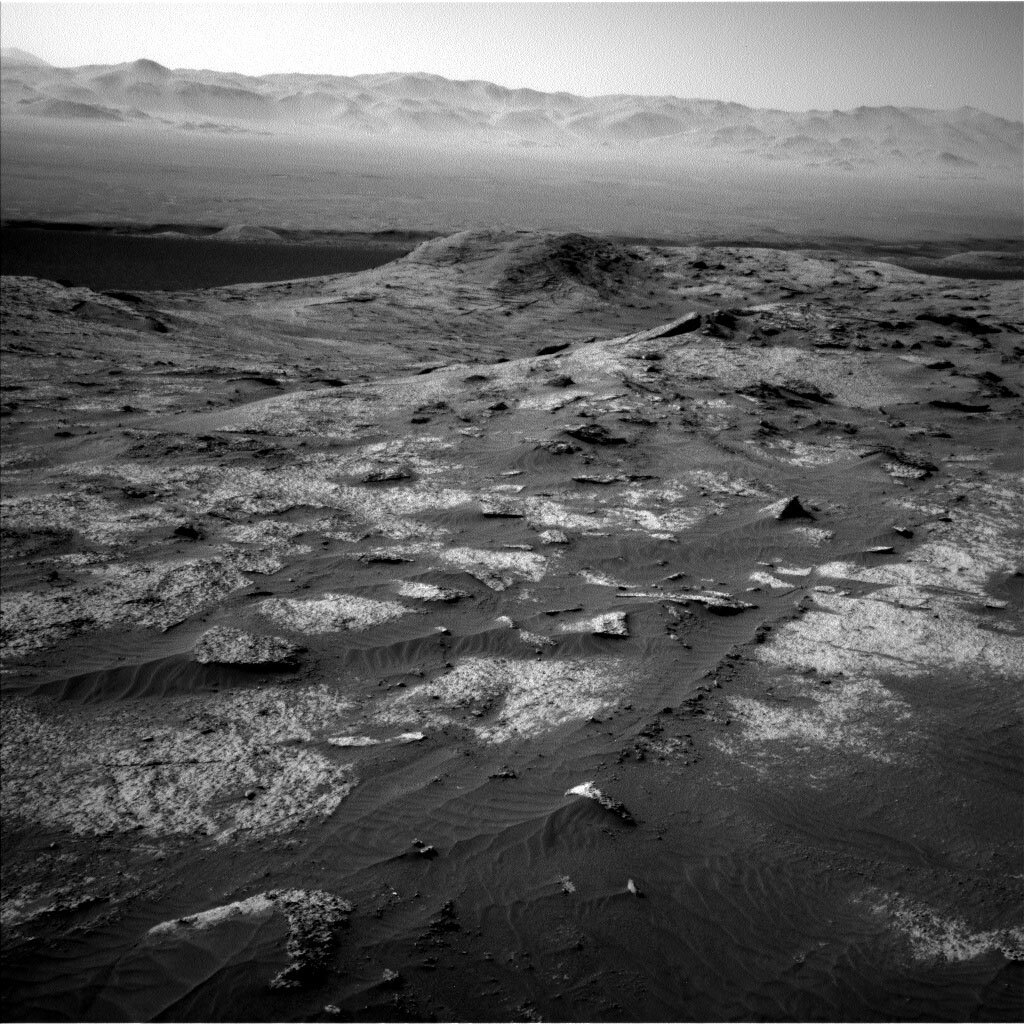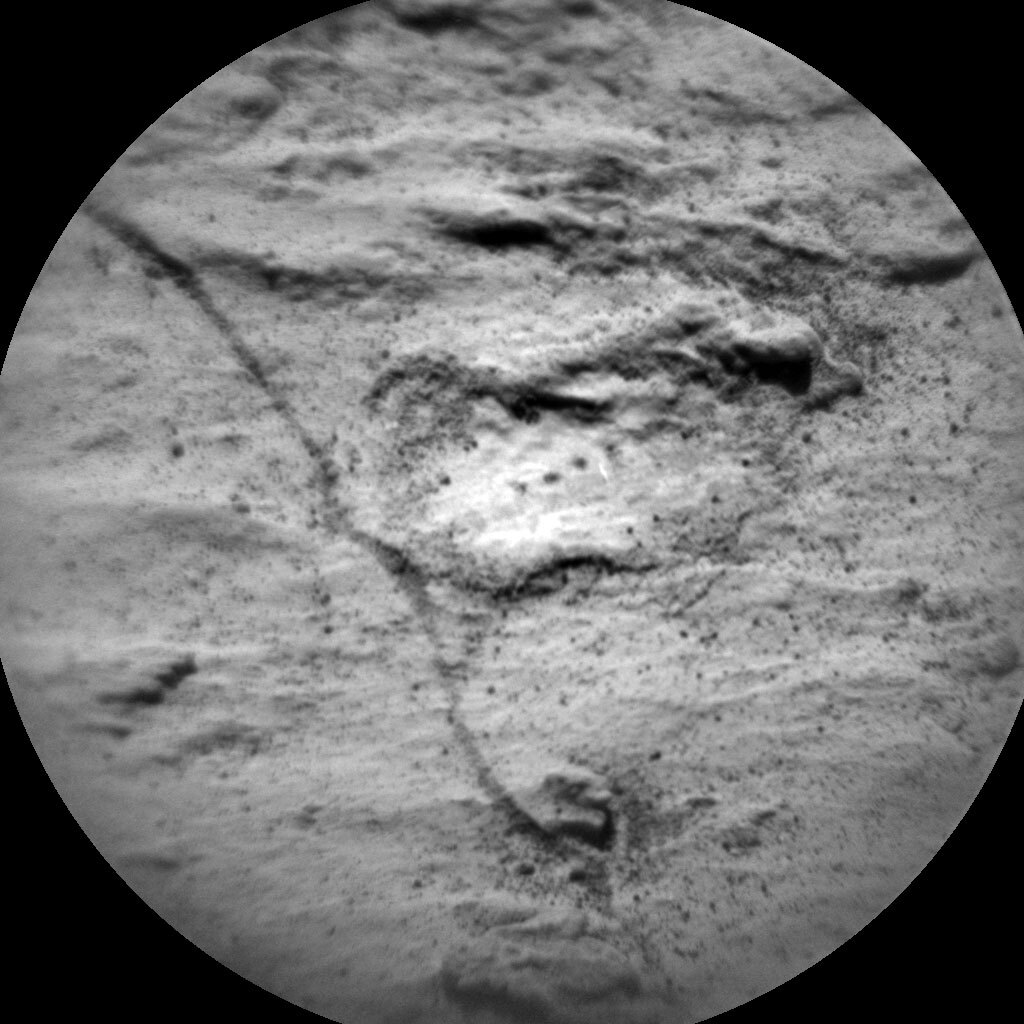August 23, 2021
Sols 3217-3218: Optimizing the Next Drive

This image was taken by Left Navigation Camera onboard NASA's Mars rover Curiosity on Sol 3216. Credits: NASA/JPL-Caltech. Download image ›
The Sol 3216 drive went well, placing the rover in an area of bright bedrock partly covered by dark sand. The top priority for today's plan is to continue making good progress toward the next potential drill target, so we worked to optimize the drive distance. The required drive duration didn't leave much time for other activities, so it was an interesting and challenging day for me as SOWG Chair. We had to make some difficult choices between various scientific observations, but ultimately were able to plan both contact science and some important remote sensing activities.
On the first sol of this 2-sol plan, the APXS will be placed on a bedrock target named "Spiggie" for a short integration. Then MAHLI will take images of Spiggie from 25 and 5 cm above the target before the arm is stowed. We were able to squeeze in a ChemCam LIBS observation of another bedrock target called "Dagon Stone" and a Right Mastcam image of the same target, plus an 18x4 Mastcam stereo mosaic of Rafael Navarro Mountain toward the southeast. This Mastcam mosaic had to be planned today because we expect to drive away from the mountain. After a ~57-meter drive and the standard post-drive imaging, MARDI will acquire another twilight image of the ground behind the left front wheel. Overnight, CheMin will vibrate its inlet funnel in an attempt to remove a speck of debris left on the inlet screen after the last drill sample was delivered to CheMin.
Planning the second sol was much less constrained, and it was easy to schedule Navcam dust devil survey and line-of-sight extinction observations, along with ChemCam untargeted activities. The AEGIS software will be used to autonomously select a ChemCam LIBS target and shoot the laser at 5 points across that target. ChemCam will also measure the spectral reflectance of several calibration targets to improve the calibration of ChemCam passive (no laser) observations. While we couldn't fit everything into this plan that we desired, it's still a good plan and I look forward to seeing the results!

